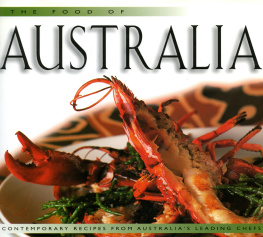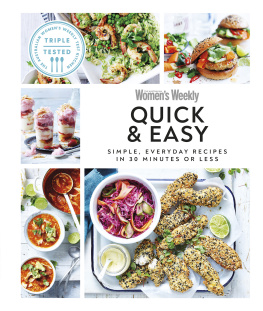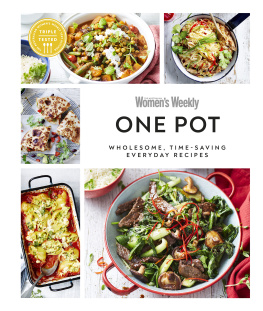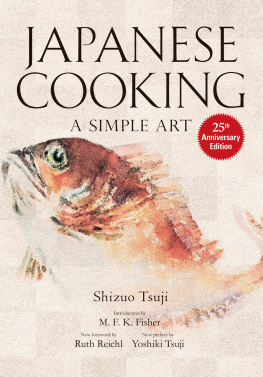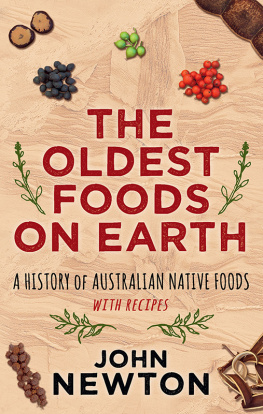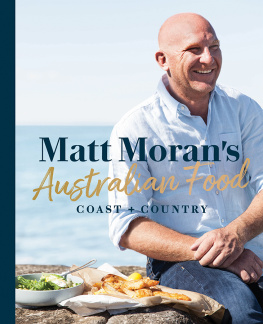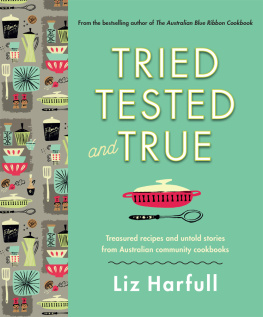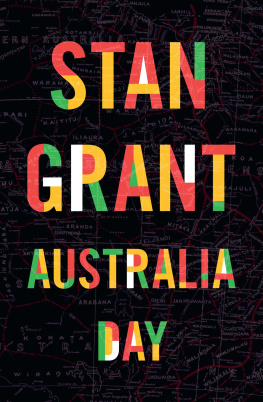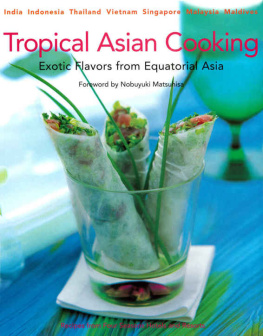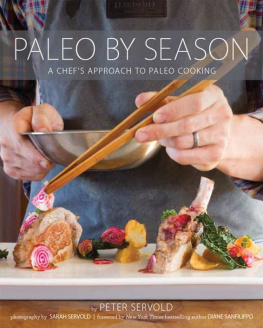A History of Australian Cuisine
From food gathering to an appreciation of fine food
by Michael Symons
I s this all men can do with a new country? Look at those tin cans!" In his documentary novel, Kangaroo, D.H. Lawrence repeatedly describes Australia as rusty tin cans scattered over bare ground. In 1923, he found "townsand corrugated ironand millions of little fencesand empty tins."
When Europeans invaded the continent just over two centuries ago, Australia went from the highly integrated food gathering practiced by the Aborigines to settled agriculture and grazing. This led to the sale of food in sacks and barrels, then bottles and cans, and finally to frozen and takeaway packs. Until recently, Australian food was the rapidly evolving cuisine of agribusiness, not a cuisine built on the love of fine food.
With the emergence of the grazing industry in the 19th century, bush workers were paid in rations called "Ten, Ten, Two & A Quarter" after the typical weekly issue of 10 pounds meat, 10 pounds flour, 2 pounds sugar and pound tea. In addition, the rations included salt and liquor. The meat, which had been salted pork or beef, became mutton slaughtered on the sheep station. Together, the rations provided a minimal diet which typically consisted of slabs of meat grilled on an open fire, heavy bread or "damper" baked in the ashes, overly sweetened tea boiled in a tin pot called a "billy," and drinks that were guzzled not for taste but for intoxication.

The early settlers and drovers were often obliged to camp out and to live off the land in terms of game, which included kangaroo.
The reformer Caroline Chisholm tried to civilize the place by conducting a public campaign to attract married couples and, especially, single women as immigrants. She distributed a booklet in London in 1847 entitled Comfort for the Poor! Meat Three Times a Day!! Promising meat at every meal was a compelling advertising slogan.
Remarking on the central culinary paradox of the country, a young French journalist, Edmond Marin La Mesle, wrote in 1883: "No other country on earth offers more of everything needed to make a good meal, or offers it more cheaply, than Australia: but there is no other country either where the cuisine is more elementary, not to say abominable."

Towards the end of the 19th century the middle classes often celebrated an Australian midsummer Christmas in the cool mountain forests.
Rough bush eating habits were civilized through improvements in the food industry. Prior to that, investments had been largely directed at primary production, and this generally meant wool. This made Australia little more than a basic "garden," and entrepreneurs had to turn their hands to the next step in the production chain-food processing and preparation. In the second half of the 19th century, the excitement shifted to food preservation and distribution. An Australian, James Harrison, has been credited with inventing mechanical refrigeration in 1851, and its first use was in long-distance shipping. Massive investment in railways opened up the hinterland to the growing of wheat, milk, sugar, fruit and vegetables.
From about the 1870s, factories turned out, among other products for both home and abroad, Rosella tomato sauce, Arnott's biscuits, IXL jams and MacRobertson's chocolates. Roller-mills produced the white flour that became so symbolic of mass-produced food. While much or the country had been too hot for traditional brewing, in 1888 the Fosters brothers brought from the United States the technology for bottled lager beer, which relied on refrigeration, pasteurization, bottom fermentation and bottling.
With this second great revolution (the industrialization of food storage and distribution), Australian cooks advanced beyond the carcasses of meat, sacks of flour and chests of tea. They were encouraged to purchase packaged foods. In short, Australian households relied on those tin cans that caught the eye of D.H. Lawrence.
But from the 1890s, suburban housewives purchased local recipe books, even if they remained essentially rearrangements of Eliza Acton's Modern Cookery for Private Families of England, written a half-century earlier. Each city adopted its culinary "bible," produced by the local gas company or a fund-raising group.

Schoolboys eating a typical lunch: a homemade Vegemite sandwich, a factory-made meat pie and a Chiko roll, a peculiarly local interpretation of the Chinese spring roll. Vegemite, a pungent spread made from yeast extract, is virtually an Australian icon.
Australian women excelled at plain and decent cookery, such as baked or roasted meats and vegetables. They also prided themselves on their puddings and cakes, relying on the iron kitchen range and the store cupboard's flour, sugar, cocoa, gelatin, dried coconut, and flavoring and coloring essences. Cooks swapped interesting recipes for sandwiches and cakes, and showed off skills at weekly "bring a plate" dances. Manufacturers issued recipe pamphlets which promoted their ingredients in "dainties" for polite morning and afternoon teas. The popular Lamington was cubes of cake coated in chocolate and coconut. The Pavlovanamed after the ballerina Anna Pavlova and based on the New Zealand "meringue cake"topped off the second stage in Australian cuisine, which was about to be transformed.
By the 1950s, food technologists had brought in the latest United States' know-how, which had been developed to feed Allied troops. This provided the technical, managerial and cultural foundation for the vertically integrated and generally foreign-owned agribusiness. At the same time, the wartime steelworks and munitions factories had been turned over to producing motor vehicles and refrigerators.
We need to appreciate the key role of private cars and refrigerators in the development of the supermarket. Until the 1950s, carters delivered much household food daily from door-to-door, or the housewives took their string bags to the corner store. Now, the car enabled the family to collect the shopping weekly from the more distant supermarket. Once home, milk and meat were now kept in the refrigerator.
The food industry's goal was not only to grow and preserve food in sophisticated ways, but now also to cook it. The archetypal "convenience" dish, the TV dinner, was to be a complete meal frozen in a reheatable aluminum tray, although it was less successful than a range of dried Chinese meals, frozen pizzas, premixed cakes and Coca-Cola.
Restaurants and cafes grew in number and Australian families who had never dined out now took to well-priced and well-prepared Chinese meals; opinion-leaders hobnobbed in fashionable bistros. Since the 1960s, cookbooks have also proliferated and diversified.
This arrival of global cuisine has usually been attributed to Australia's strong post-war immigration program. Certainly, Australian society is now markedly multicultural. However, it had previously been a "mixing-pot" without accepting Italian, Chinese or other cooking. The latest culinary development is the "discovery" of Australia's indigenous ingredients.

Eating out in restaurants and cafes is now very much part of the modern Australian lifestyle.

